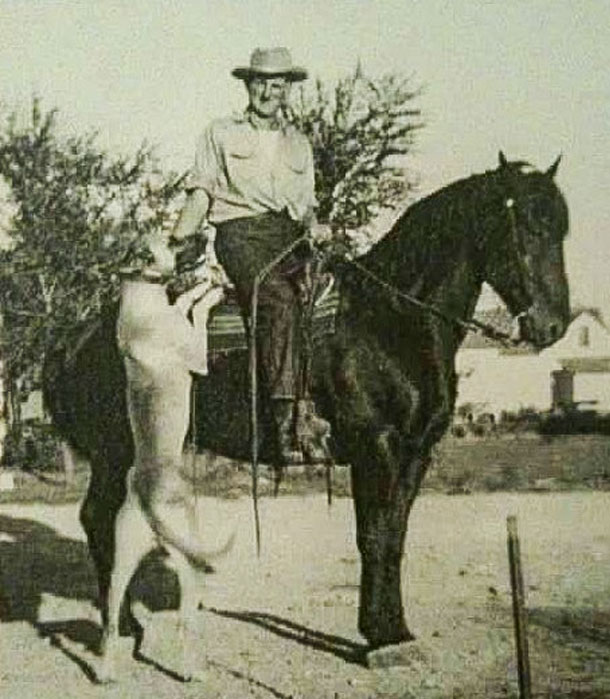This part of the novel reminded me of a story from my own family history. In the late 1950s, my granddad worked as a butcher in a slaughter plant. Occasionally, a “calvey” cow or heifer would come in from the feedlot. After he slaughtered the animal, he would cut the calf out and quickly bring it around. If it initially survived, he would call my grandmother and she would load the newborn calf in the car and take it home. My aunts and uncle would then raise these calves on the back step of their porch. The family’s goal was to use these calves to start a cattle herd of their own. This process went on for a number of months until they gathered quite a little herd.

Despite the collection of orphan calves, my granddad was not a cattleman. He was a horseman – and a pretty good one at that. He spent his entire life riding and breaking horses. One afternoon while breaking a fresh horse, the animal spooked and he ended up with his boot caught in the stirrup and was drug through the pasture. This accident broke his leg, and he was out of work until the leg healed. What kept the family afloat during that time were the calves they had rescued from those butchered cows. My grandmother sold a few calves every month to make up the lost paycheck. In the end, they never had their cattle herd, but the family survived.
I use these stories to point out an injustice to that most practical of creatures, the cow. To prove my point, I did a Google search for “popular cow books.” Other than a James Herriot tagged under “cow,” there were only picture books on the list. Using the same methodology, I searched “popular horse books.” The first link was to www.goodreads.com, which had a list of 41,000 books that matched that search, everything from Black Beauty to Secretariat.
Cows never seem to get the credit they deserve. And horses, they get all the accolades. Who was the villain and who was the hero in my family story? Since humans domesticated the Bos taurus, they have provided meat and milk, and they pulled plows and pulled wagons. Sure, during ancient (I use this word liberally) times horses played their role, and it may even be argued which creature brought more value to a household. Today, there is no argument. Horses are almost universally considered items of leisure. Whereas, the cow, she is still pulling her weight and more, although she (I should say he) is no longer pulling a plow.
As cattle producers, we often find ourselves in a split crowd on this topic. On my operation we raise cattle with the help of a couple of “Japanese horses” and have found a real horse is not quite necessary. We do have an old mare that we occasionally use, and we often admit how helpful a couple of horses would be when moving cows. For us, they might be helpful but not critical.
There is another group in the crowd that raises cattle only for the benefit they have for their horses. I might be using the term “raise cattle” loosely, but they buy calves strictly for tie-down and team roping practice.
Then there is the final group, the one that most of you fit in. For you, there is a symbiotic relationship between horses and the cattle on your operation. Horses and cattle are mutually beneficial, and you don’t know how you could properly ranch without both animals. They make every aspect of ranching better – from moving cows, to branding and sometimes even feeding. They provide companionship and intelligence, something a cow could never do. This is a valid argument.
But, who pays the paycheck? Who buys the hay for the valiant and beautiful equine? It’s the cows. It’s always the cows. If you don’t believe me, pick up a copy of George Orwell’s Animal Farm. All I am saying here is let’s give the cow just a little bit of credit. Doesn’t she deserve at least one book of her very own? I will suggest a title – “The Cow and Her Girl.” ![]()
Erica Louder is a freelance writer based in Idaho.
PHOTO: The author’s grandfather Bill Ramsey with his favorite animals and not a cow in sight. Photo provided by Erica Louder.







